Pedaling for a Purpose: Exploring the Intersection of Cycling and Wildlife Conservation
As a cyclist, I’ve always been captivated by the beauty of the natural world that unfolds around me as I ride. There’s a unique sense of connection to the environment when you’re on two wheels, and it’s this very connection that has led many cyclists, myself included, to become passionate advocates for wildlife conservation. In this article, we’ll delve into the compelling relationship between cycling and wildlife conservation and explore how our love for the open road can make a meaningful impact on the preservation of our planet’s precious biodiversity.
Cycling Events and Conservation Initiatives
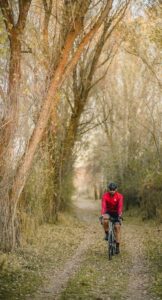
1. Eco-Friendly Transportation to Wildlife Reserves
Some cyclists take their passion for wildlife conservation to the next level by using their bikes as a means to reach remote wildlife reserves and conservation areas. By cycling to these destinations, they reduce their carbon footprint and minimize the environmental impact of their visits. This eco-friendly approach aligns with the principles of sustainable tourism, ensuring that the natural beauty of these areas remains preserved for future generations.
2. Birding Competitions
Birdwatching is a favorite pastime for many cyclists. Some cycling clubs organize birding competitions, combining their love for cycling with a passion for ornithology. Participants embark on rides that pass through diverse habitats, recording bird species they encounter along the way. These events raise awareness about avian biodiversity and the importance of protecting critical bird habitats.
The Intersection of Cycling and Wildlife Observation
1. Wildlife Photography Workshops
Cycling clubs often collaborate with wildlife photographers and naturalists to host wildlife photography workshops. These workshops teach cyclists how to capture the beauty of nature responsibly and ethically. Cyclists learn about the behavior of wildlife and gain a deeper appreciation for the creatures they encounter during their rides.
2. Connecting with Local Ecotourism Operators
Cyclists who are passionate about wildlife often connect with local ecotourism operators. These partnerships can result in guided cycling tours designed to showcase the region’s unique flora and fauna. Cyclists gain insights into local conservation efforts and support the livelihoods of ecotourism guides who are dedicated to preserving their natural surroundings.
Cycling Organizations and Wildlife Partnerships
1. Conservation Grant Programs
Several cycling organizations have established conservation grant programs. These initiatives provide funding to wildlife conservation projects and research. Cyclists who are members of these organizations can take pride in knowing that a portion of their membership fees or event registrations goes directly toward supporting the protection of wildlife and their habitats.
2. Wildlife-Friendly Trail Maintenance
Collaboration between cycling organizations and wildlife conservation groups often results in wildlife-friendly trail maintenance practices. Trails are designed and maintained with wildlife in mind, incorporating measures such as underpasses or overpasses to help animals safely cross roads and trails. Cyclists can actively engage in these efforts by volunteering for trail maintenance projects.
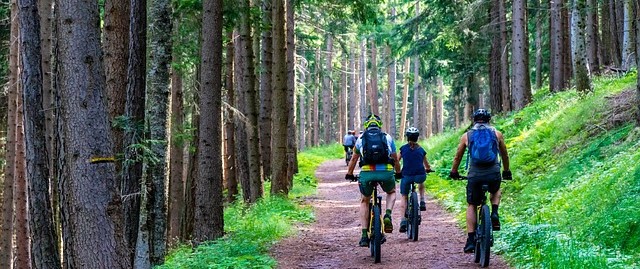
Sustainable Cycling Practices
1. Promoting Responsible Pet Ownership
Cyclists frequently encounter pets on their rides, and many are passionate advocates for responsible pet ownership. They educate fellow cyclists and dog owners about the importance of leash laws in natural areas to prevent wildlife disturbance and protect vulnerable species.
2. Supporting Wildlife Rehabilitation Centers
Cyclists may volunteer their time or donate funds to wildlife rehabilitation centers. These centers play a vital role in caring for injured or orphaned wildlife. Cyclists who come across injured animals during their rides can contact these facilities for assistance, ensuring that injured wildlife receives the care it needs for potential release back into the wild.
These additional examples further illustrate how cycling and wildlife conservation are closely intertwined. Whether it’s organizing birding competitions, hosting wildlife photography workshops, or supporting local ecotourism initiatives, cyclists continually find creative ways to engage with and contribute to wildlife conservation efforts while enjoying the beauty of the natural world from their two-wheeled perspective.
Cycling’s Low Environmental Impact
1. A Greener Mode of Transportation
Cycling is inherently eco-friendly. Unlike motorized vehicles, bicycles produce zero emissions, contributing to reduced air pollution and a smaller carbon footprint. By choosing to cycle, we reduce our dependence on fossil fuels and help mitigate the negative effects of climate change, which can directly impact wildlife habitats.
2. Preservation of Natural Habitats
As cyclists, we often traverse through unspoiled natural landscapes, from pristine forests to untamed coastlines. Our commitment to minimizing our environmental impact helps protect these habitats from urban development and pollution. The less we disturb these areas, the more likely they are to remain havens for wildlife.
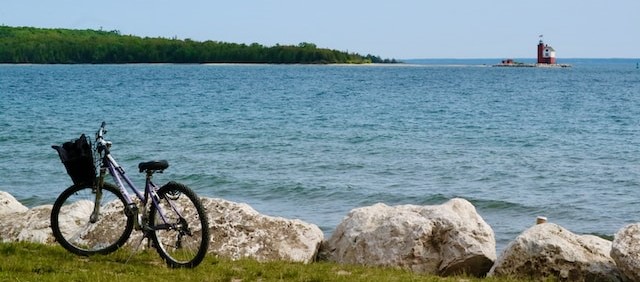
Cycling Events and Conservation Initiatives
1. Charity Rides and Fundraising
Cycling events, such as charity rides and fundraising challenges, provide an excellent platform to raise awareness and funds for wildlife conservation efforts. These rides not only promote physical fitness but also rally cyclists around a shared cause. Many cyclists participate in such events to support organizations dedicated to protecting endangered species and their habitats.
2. Conservation-Themed Rides
Some cycling events are specifically organized to spotlight conservation issues. These rides often take participants through areas rich in biodiversity, emphasizing the importance of preserving these ecosystems. Cyclists gain firsthand knowledge of the wildlife and landscapes they’re helping to protect.
The Intersection of Cycling and Wildlife Observation
1. Slower Pace, Closer Encounters
Cycling allows us to explore natural environments at a slower pace than motorized vehicles. This leisurely pace offers unique opportunities for wildlife observation. Birds, mammals, and other creatures are less likely to be startled by a cyclist’s approach, providing a chance to witness their behavior up close.
2. Birdwatching and Ecotourism
Many cyclists combine their love for the sport with a passion for birdwatching and ecotourism. Certain cycling routes are renowned for their bird-rich habitats, making them prime destinations for enthusiasts. These activities promote an appreciation for biodiversity and the need to protect fragile ecosystems.
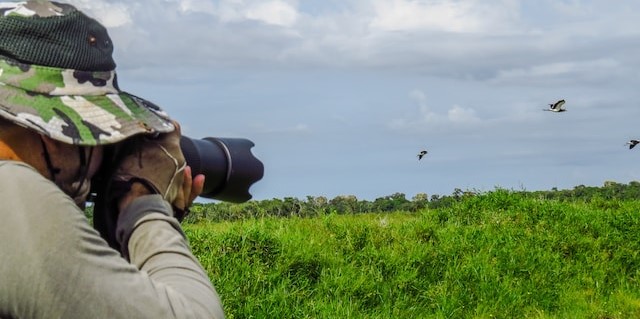
Cycling Organizations and Wildlife Partnerships
1. Advocating for Conservation
Numerous cycling organizations recognize their role in promoting environmental stewardship. They actively advocate for wildlife conservation through campaigns, partnerships with conservation nonprofits, and sustainability initiatives. These organizations understand that preserving natural spaces benefits both cyclists and wildlife.
2. Habitat Restoration and Trail Maintenance
Cycling trails often traverse through sensitive ecosystems. Recognizing this, many cycling groups engage in habitat restoration projects and trail maintenance efforts. These activities help repair damage caused by human activities and ensure that wildlife can thrive in these areas.
Sustainable Cycling Practices
1. Leave No Trace
Cyclists who practice “Leave No Trace” principles minimize their impact on the environment. This philosophy emphasizes responsible outdoor ethics, including packing out all trash, staying on designated trails, and respecting wildlife by keeping a safe distance.
2. Eco-Friendly Gear and Accessories
The cycling industry has embraced sustainability, with many companies offering eco-friendly gear and accessories. From biodegradable water bottles to sustainable bike frames, cyclists have access to products that align with their conservation values.
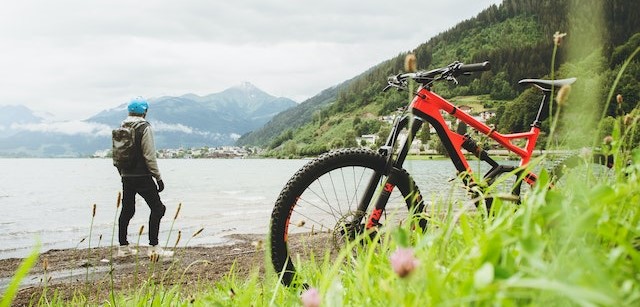
Community Engagement and Education
1. Inspiring Future Conservationists
Cycling clubs and organizations often host community events that promote conservation education. These events can inspire young cyclists to become future advocates for wildlife protection and environmental stewardship.
2. Sharing Knowledge
Cyclists who are passionate about wildlife conservation often share their knowledge and experiences with others. This knowledge exchange fosters a sense of community and encourages fellow cyclists to appreciate and protect the natural world.
Conclusion: Cycling as a Force for Good
Cycling and wildlife conservation are not mutually exclusive; they are deeply interconnected. As cyclists, our love for the outdoors and the environments we pedal through drives us to become stewards of the natural world. By choosing the eco-friendly mode of transportation that cycling offers, supporting conservation initiatives, and embracing sustainable practices, we can contribute to the preservation of wildlife and their habitats. Cycling isn’t just a sport; it’s a powerful force for good, enabling us to explore the beauty of nature while actively participating in its protection. So, hop on your bike, embark on your next cycling adventure, and make a positive impact on the world’s biodiversity—one pedal stroke at a time.

